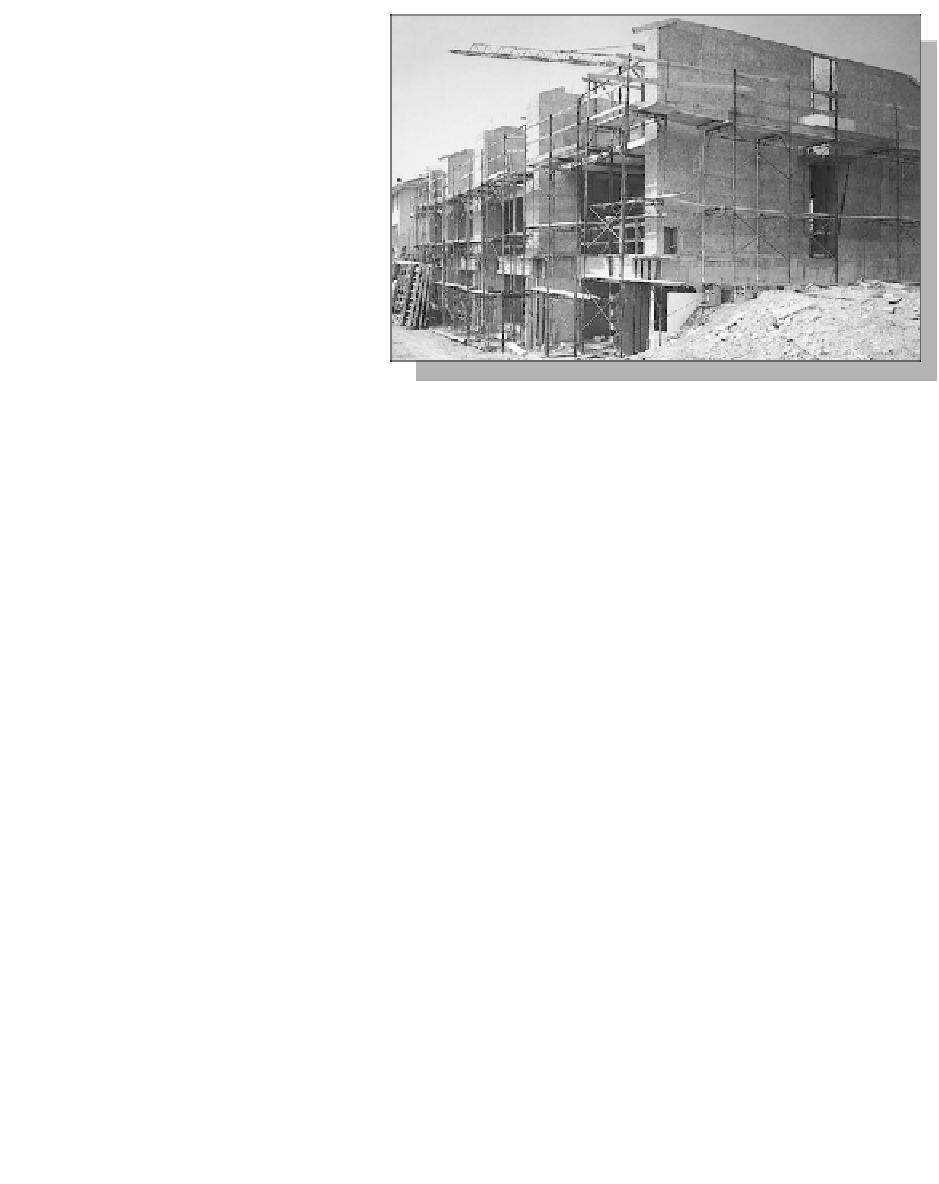Civil Engineering Reference
In-Depth Information
Woodwool cement boards -
production and use
Wood with too much tannic acid, such
as oak, cannot be used. Spruce is
best, preferably waterlogged, but even
this can be unsuitable in parts
because of large quantities of resin
and sugar. Particularly unsuitable
wood can be sorted out in the following
manner: a piece of the wood is put in
cement mortar. If it can be pulled out
after two days, then the timber in ques-
tion is unusable (Chittenden, 1975).
Woodwool from a lime tree can also be
used.
A woodwool slab is made in the fol-
lowing way:
Figure 14.14: Dwellings built with woodwool blocks under
construction in Italy.
1.
Timber is cut up into 50 cm lengths
and planed to woodwool.
2.
The active ingredients in the woodwool are neutralized. There are several methods for
this: The cell contents can be washed out by boiling the wooden particles or the wood-
wool can be oxidized in fresh air for a year. As a final treatment the particles can have
substances added which accelerate the setting of the concrete. Sodium silicate
(waterglass), calcium chloride and magnesium chloride can be used. The wood is left
to lie in a 3-5 per cent solution for a while.
3.
Cement with less than 1 per cent aluminium sulphate is mixed with water in a mechan-
ical or manual mixer.
4.
The woodwool is poured into this and well mixed in.
5.
The mixture is poured into moulds and pressure is applied while they set. At this point,
wood reinforcement can be inserted to increase strength. This is often used for the
thicker slabs.
6.
After 24 hours the slabs are taken out and cured for two to four weeks before being
sold.
The slabs can be nailed, screwed or cast into place. The joints should be covered with a
strip of netting if cement mortar is to be applied.
The slabs can also be cast with magnesite mortar with a little magnesium sulphate
added, but these products are less resistant to moisture than cement products, and can-
not be used as insulation for foundation walls. Magnesite boards were on the market much
earlier than woodwool cement; they were first manufactured in Austria in 1914 and are still
in production under the name of Heraklit.

